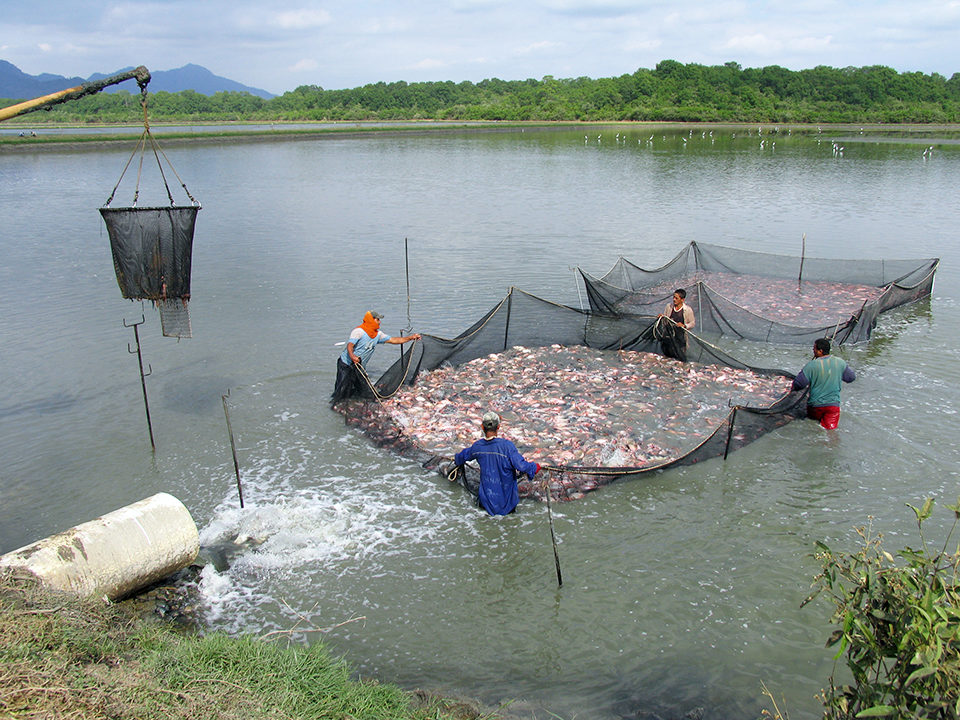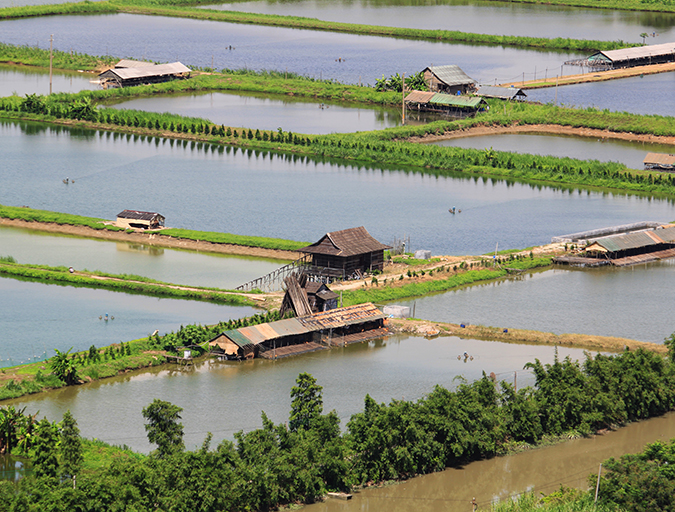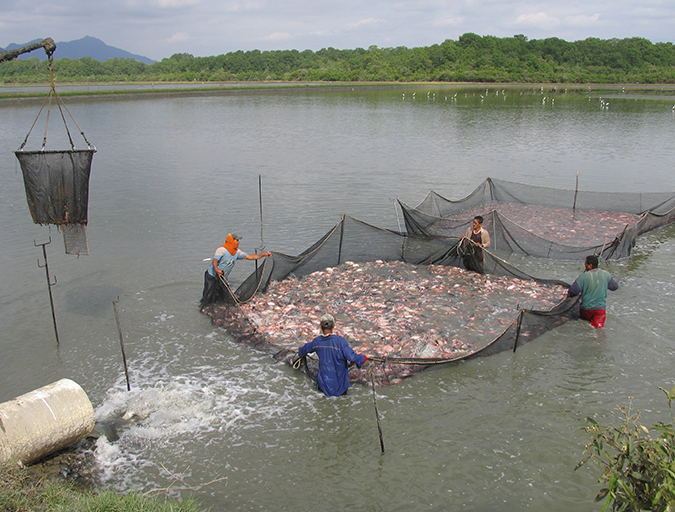Farms can conduct gap analyses to estimate actions and associated costs

As the market for certified aquaculture products continues to expand, more farms will consider the costs and returns involved. It is expected that certification will bring returns to the farms in terms of increased market share, access to higher-priced markets and, potentially, price premiums. Certification also reduces risks to businesses and is financially valuable.
With the main driver being market demand for products from certified facilities, the big question farms face is: Is certification worth it? The farms need to decide whether access to the certified market is worth the additional costs involved.
Certified or not, farms are constantly improving their processes due to market requests plus a better understanding of their own operations. And if good practices are being implemented, then why not gain credit for them?
As farms improve, the costs of certification should fall. Certainly, if the financial benefit to a farm outweighs the cost over a given period, it should get certified.
Certification benefits
For the environment, society and wider economy, certification should ideally have significant benefits with limited costs. Aquaculture standards include criteria aimed at reducing ecosystem impacts, encouraging responsible use of resources, minimizing externalities such as pollution, conservation of water and ensuring wild fish populations used in feed are managed sustainably.
Society benefits from the improved working conditions and reduced impacts on communities brought about by compliance with certification standards. Macroeconomies would expect to benefit from, for example, tax revenues, an increase in the overall value of the sector, infrastructure development, diversification and foreign exchange generation. Other gains resulting from seeking certification can include improvements in animal welfare, carbon footprint or traceability.
While there are widespread benefits from certification, farms must bear the costs, at least initially. The farms must invest in procedures, equipment and services to achieve compliance with standards, and there are risks that the new procedures could affect productivity and raise production costs. In return for their investments, farms aim to benefit from increased demand working its way down from retailers in developed markets.
Market commitment
The commitment to certification made by major buyers ensures a market for certified product. These retailers and foodservice providers use certification to demonstrate ethical practices and reduce their risks. Aquaculture certification offers a simple solution for the market that avoids the need for development of codes of conduct and self-certification.
If markets make certification a requirement for access, then the value of certification could be seen in terms of the potential loss of valuable markets as well as the ability to target the higher-priced markets. Operations with varied production types can have the best farms certified and leave the worst uncertified to diversify into more markets.
Costs of improvement
To achieve certification, farms typically need to develop internal control systems that address the requirements of the standards. Associated costs include the direct and indirect costs of implementing certification, such as personnel time and wages in developing systems.
The capital costs of farm certification could include equipment for testing or barriers to prevent escapes. Farms may also incur the costs of services such as waste removal.
The costs of production could increase due to the restricted use of chemicals or antibiotics. And any impacts in terms of direct feed cost or reduced feed conversion can dramatically impact the bottom line. Labor costs may also increase due to wage minimums or improved working conditions.
Adding resources to a farm involves opportunity costs plus interest over time. The result is a total system cost for converting the farm and operating it in a way to comply with the certification standards. The total will depend on the size of the farm, the size of the company and how far the farm was from certification to begin with. Farms will have lower costs if they already operate to a high standard, and the gap between the current practices and the requirements of the certification standards is limited.
Before any benefits of certification are reaped, external costs for interventions like consultancy, impact assessments, training and certification-related fees must be considered. In some cases, returns may only be seen after a long period of expense, and the pay-back period can be even longer.

Indirect benefits
Some farm improvements have indirect benefits that do not bring direct revenue, such as skilled labor and improved knowledge. It may not be obvious how to include these benefits in economic analyses. Furthermore, farm owners may benefit at other stages of the supply chain through the marketing or quality improvements that result from better farming practices.
These advantages have their own impacts on selling prices. For integrated companies with processing facilities, the marketing benefits of certified products can offset some of the farm costs.
Farms must also consider their position in the value chain, since farms sell to traders or processing companies, not retailers. The benefits of any ecolabel must filter down the supply chain back to the farms. Vertically integrated operations may have internal transfer prices. If the farm gate markets are unclear, there may be a need for value chain analysis to determine the impacts of demand.
In order to determine costs, farms can conduct gap analyses to estimate the actions and associated costs for needed improvements. These give insight into specific conversion and compliance challenges.
Perspectives
Since the majority of benefits of certification are not included in farms’ decisions on certification, there will be cases when farms do not proceed because the initial cost burden is focused on just the farms and not all the parties that benefit. Additional economic value could be created if the wider beneficiaries covered some of the costs of certification and aided farmers to gain certification.
Support would be best provided in the initial stage to cover the investment period. Stakeholders that benefit from the environmental, social or economic benefits of certification have the greatest incentives to provide this support. It is in their interest for more farms to become certified.
The support could be provided financially with soft loans and tax incentives, or as in-kind support through training or consultancy advice. Guidance documents are helpful, but it is financial credit that is needed in the short term to cover the initial costs so that the investment can be repaid.
(Editor’s Note: This article was originally published in the November/December 2012 print edition of the Global Aquaculture Advocate.)
Now that you've reached the end of the article ...
… please consider supporting GSA’s mission to advance responsible seafood practices through education, advocacy and third-party assurances. The Advocate aims to document the evolution of responsible seafood practices and share the expansive knowledge of our vast network of contributors.
By becoming a Global Seafood Alliance member, you’re ensuring that all of the pre-competitive work we do through member benefits, resources and events can continue. Individual membership costs just $50 a year.
Not a GSA member? Join us.
Author
Tagged With
Related Posts

Responsibility
Aquaculture certification steers to zone management
Zone management is an emerging field of interest among industry stakeholders. Experts say it will aid in controlling diseases and in determining carrying capacities. We take a closer look at the management tool’s potential.

Responsibility
A look at various intensive shrimp farming systems in Asia
The impact of diseases led some Asian shrimp farming countries to develop biofloc and recirculation aquaculture system (RAS) production technologies. Treating incoming water for culture operations and wastewater treatment are biosecurity measures for disease prevention and control.

Responsibility
Addressing safety in Latin America’s tilapia supply chain
Over the last decade, the experience gained by many tilapia farmers combined with proficient programs implemented by local governments have significantly improved tilapia production in various Latin American countries like Colombia, Mexico, Ecuador and other important tilapia producers in the region.

Responsibility
An African prison where fish will be farmed and lives saved
A nonprofit organization working to improve conditions in African prisons is hoping tilapia ponds, tended to by inmates, will aid in their nutrition. A small donation from the Global Aquaculture Alliance will go a long way.



